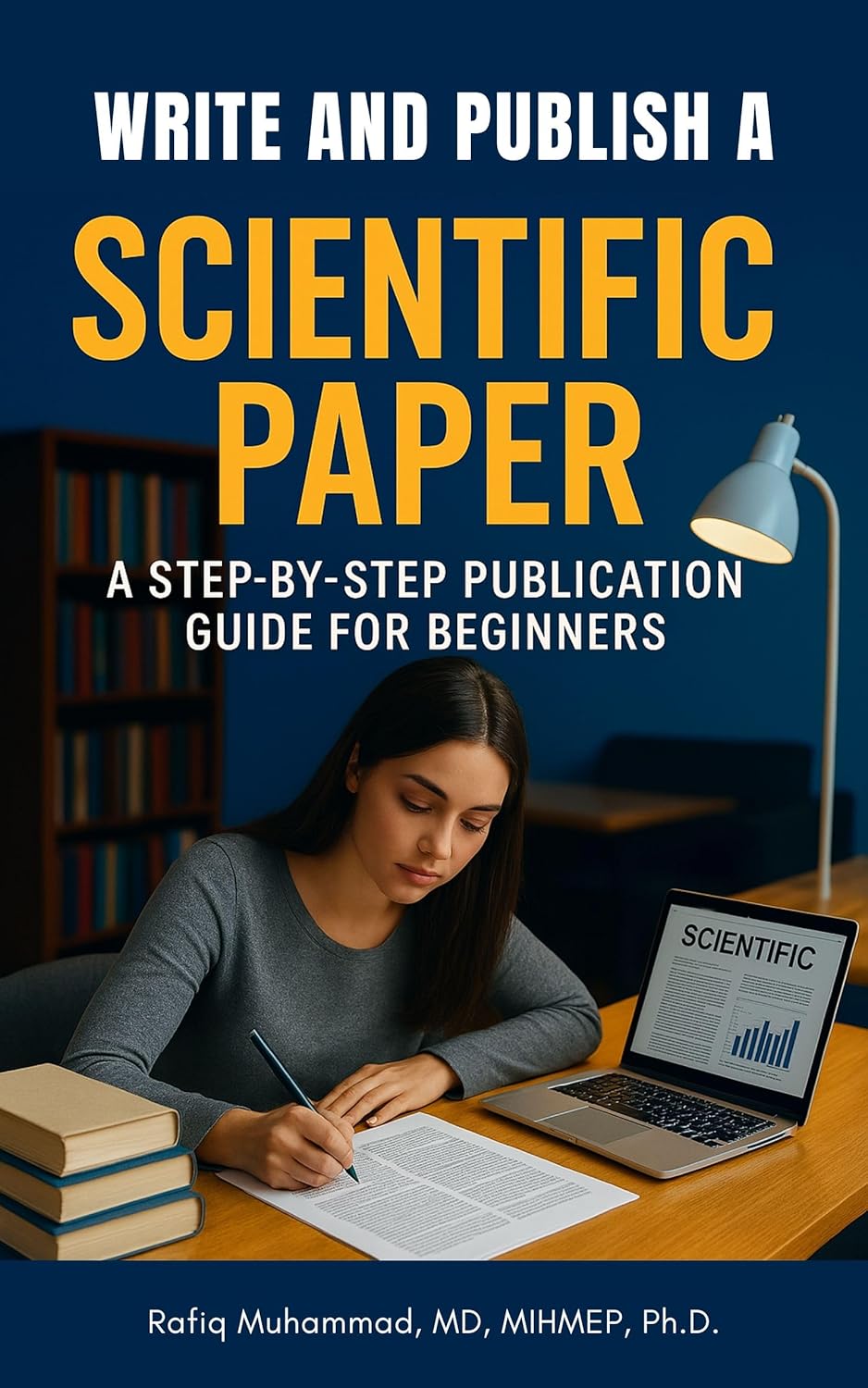Write and Publish Scientific Paper: A Step‑By‑Step Publication Guide for Beginners
Write and Publish Scientific Paper: A Step‑By‑Step Publication Guide for Beginners is a step-by-step scientific writing guide that walks you through the IMRaD structure—Introduction, Methods, Results, and Discussion— with section-specific checklists and model language. You’ll learn how to frame a compelling gap, report methods transparently, present findings precisely, and craft a discussion that balances limitations and impact.
Pick the right outlet using a Journal-Fit matrix for journal selection, then use templates for writing titles and abstracts, a robust methods section, and accurate results reporting. You’ll prepare figures and tables that stand alone, write an effective cover letter, and navigate the peer-review process with professional, point-by-point responses to reviewers.
- IMRaD playbook: sentence-level scaffolds for intro → methods → results → discussion.
- Journal-Fit matrix: scope, audience, turnaround, indexing—rank targets realistically.
- Reporting guidelines: CONSORT, PRISMA, STROBE, COREQ—what to include and how to cite checklists.
- Figures & tables: caption patterns, units/labels, and supplement planning.
- Reasons for rejection: weak gap, underpowered methods, overclaims—diagnostics and fixes.
- Responding to reviewers: polite, evidence-based replies with tracked changes and page/line refs.
- Open access vs preprints: policies, timelines, and how to increase visibility responsibly.
- Manuscript editing: clarity/conciseness passes, language polish, and scientific paper checklist.
- Ethical authorship & transparency: CRediT roles, plagiarism avoidance, data/code citation, and citation styles (APA, Harvard).
Finish with a submission-ready package—clean manuscript, compliance with reporting guidelines, a tailored cover letter, and a response-to-reviewers document that speeds decisions. The result: research transparency your editor, reviewers, and readers can trust.
What’s inside
- Clear chapter-by-chapter roadmap
- Reusable templates and checklists
- Step-by-step examples from real projects
Who it’s for
- Graduate students (MA/MSc/PhD)
- Early-career researchers
- Supervisors seeking practical frameworks
What readers say
“Exactly what I needed to get unstuck.”
“Concise, rigorous, and practical.”
What you'll learn
- Section‑by‑section writing guide and language templates
- Journal‑fit matrix to target the right outlet
- Top rejection reasons — and precise fixes
Frequently asked questions
How do I choose the right journal for my paper?
Match scope, audience, and article type first; then check recent papers, acceptance rate, typical time-to-decision, indexing (Scopus/Web of Science), and open-access policies. The book’s Journal-Fit Matrix helps you shortlist and rank realistic targets.
What’s the ideal structure for a scientific article?
Use the IMRaD model: Introduction (problem & gap), Methods (transparent & reproducible), Results (findings only), and Discussion (meaning, limitations, implications). The book provides section-by-section language templates to speed drafting.
How do I write a high-impact title and abstract?
Title: precise problem + population/method + key outcome (avoid clickbait). Abstract: one paragraph with background, objective, methods, key results (effect size & uncertainty), and impact. Include 5–7 specific keywords aligned to the journal’s indexing terms.
What do editors look for in the Methods & Results?
Methods: design, participants/data, measures, procedures, analysis plan, preregistration, and software. Results: primary outcomes first, exact statistics (effect sizes, CIs, p-values), and no interpretation. Use reporting checklists to avoid omissions.
How do I prepare figures, tables, and supplementary files?
Use self-contained captions, consistent units/labels, and journal-compliant formats (vector for line art, high-res for images). Put robustness checks, protocols, and extra analyses in supplements. The book includes a figure/table checklist.
What belongs in a strong cover letter?
1) One-sentence contribution, 2) why this journal’s audience, 3) novelty vs prior work, 4) compliance (ethics/data/COI), 5) suggested reviewers (optional) and exclusions (with rationale). Keep it one page.
Top reasons papers get rejected—and quick fixes?
Mismatched scope, weak gap, underpowered or unclear methods, analytic errors, oversized claims, or poor writing. The book’s “Rejection Triage” maps each reason to targeted rewrites and checks (power, robustness, language polish).
How should I respond to peer-review comments?
Use a point-by-point response. Quote each comment, state the change, and show where it appears in the manuscript. If you disagree, offer data-based justification and a compromise. Maintain a professional tone.
Which reporting guidelines should I follow?
Use domain-appropriate standards (e.g., CONSORT for trials, PRISMA for reviews, STROBE for observational studies, COREQ for qualitative). Many journals require a completed checklist at submission—include it.
Are preprints and open access a good idea?
Preprints can speed visibility, establish priority, and attract feedback (check journal policies). Open access increases reach; weigh APCs vs funder mandates. The book outlines safe preprint and OA strategies.
How do I handle authorship, ethics, and AI use?
Define contributions with CRediT taxonomy, confirm IRB/ethics where needed, register trials, and disclose funding/COIs. If using AI tools, document tasks (e.g., copy-editing) and verify all content; authors—not tools—remain accountable.
How can I make my paper discoverable after publication?
Choose precise keywords/MeSH terms, write a lay summary, share a preprint or accepted manuscript when allowed, and link data/code in trusted repositories with a DOI. The book includes a post-publication checklist.
How long does peer review take and how do I track progress?
Typical first decisions take 4–12 weeks. Monitor the submission portal; if timelines exceed the journal’s median and reviews are overdue, a polite inquiry to the editor is acceptable after their stated window.
